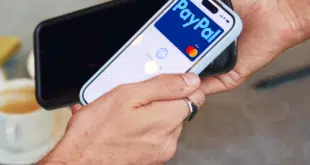By John Stewart
@DTPaymentNews
Bank and non-bank players alike are scrambling to claim a share of the peer-to-peer payments market, and a report released this week explains why: adoption is hot and getting hotter. Slightly more than one-third of U.S. consumers made at least one transaction last year, up from one-quarter just three years earlier, according to Javelin Strategy & Research.
With current trends, Javelin projects that figure will grow to 38% this year, and to nearly half by 2021. The research includes both online and mobile P2P payments.
In total, some 84 million consumers paid someone else via a digital P2P system one or more times last year, with volume totaling $482 billion. That consumer count was up 13.5%, “demonstrating the broad appeal of these transfers,” Javelin says in a summary of its research. By 2021, the firm expects 129 million consumers to have adopted P2P.
U.S. consumers are embracing these payments as non-bank companies like Square Inc. and PayPal Holdings Inc., with its popular Venmo service, and financial institutions start to square off. Some 19 major banks this year expect to launch a service called Zelle, which will make it easier for users to transfer payments nearly instantly to persons with an account at any of the participating banks. Formerly known as clearXchange, Zelle is backed by Early Warning Services LLC, a bank-owned risk-management company.
“Early Warning’s announcement of Zelle, a real-time P2P service for banks, is a serious competitive threat to Venmo and other nonbank P2P providers,” Javelin’s summary says.
But there are obstacles both banks and non-bank providers must overcome to reach that near-50% adoption rate, Javelin says. Banks must make the service more widely available within their digital offerings, while bank and non-bank players must offer the service routinely as part of their mobile-wallet services, the firm advises. It would also help if they enabled P2P via chatbots and other digital assistants, Javelin says.
A separate, and as yet unsolved, issue is that P2P services, while popular, seldom make money, as users have shown a disinclination to pay fees. “Although some [financial institutions] today charge their customers a minor fee for sending P2P payments, it is not a sustainable, long-term business model,” Javelin says. “This is particularly true in the face of FI competitors and social-media providers who offer it for free.”
According to the report, one gambit that could justify a charge is to offer real-time payments, as Zelle is promising to do.




